Meet The Man Who Grew 300 Mango Varieties on a Single Tree
Kalimullah Khan was never meant to become a scientist. He failed Class 7, dropped out of school, and spent his days wandering his family’s mango orchard in Malihabad, Uttar Pradesh. But what he lacked in formal education, he made up for in instinct — and an idea no one else dared to imagine: what if a single tree could grow hundreds of different mangoes?
Today, the 84-year-old is a Padma Shri awardee, known across the country as the ‘Mango Man of India’. His name is in the Limca Book of Records, and his orchard has become a living laboratory — home to a tree that bears more than 350 distinct varieties of mangoes.
But Kalimullah doesn’t speak of success. He speaks of soil, failure, grafting, and love — the kind of quiet work that has kept him rooted to the same land for over six decades.
“I may not have the energy to speak much today, as age has taken its toll, but I will share what I can. There’s so much to say about my tree. It has been nurtured with immense love, and it holds a lifetime of memories,” Kalimullah tells The Better India. “People should visit my orchard to see the tree and understand the variety of mangoes, each with its distinct qualities,” he proudly shared.
Building a life around mangoes
Khan’s innovative approach to grafting has earned him national and international recognition. This ancient technique, which involves joining a branch from one tree to the rootstock of another, has been used in agriculture for centuries. Through his research and years of hard work, he has created a mango tree that bears a staggering 350 varieties of mangoes.
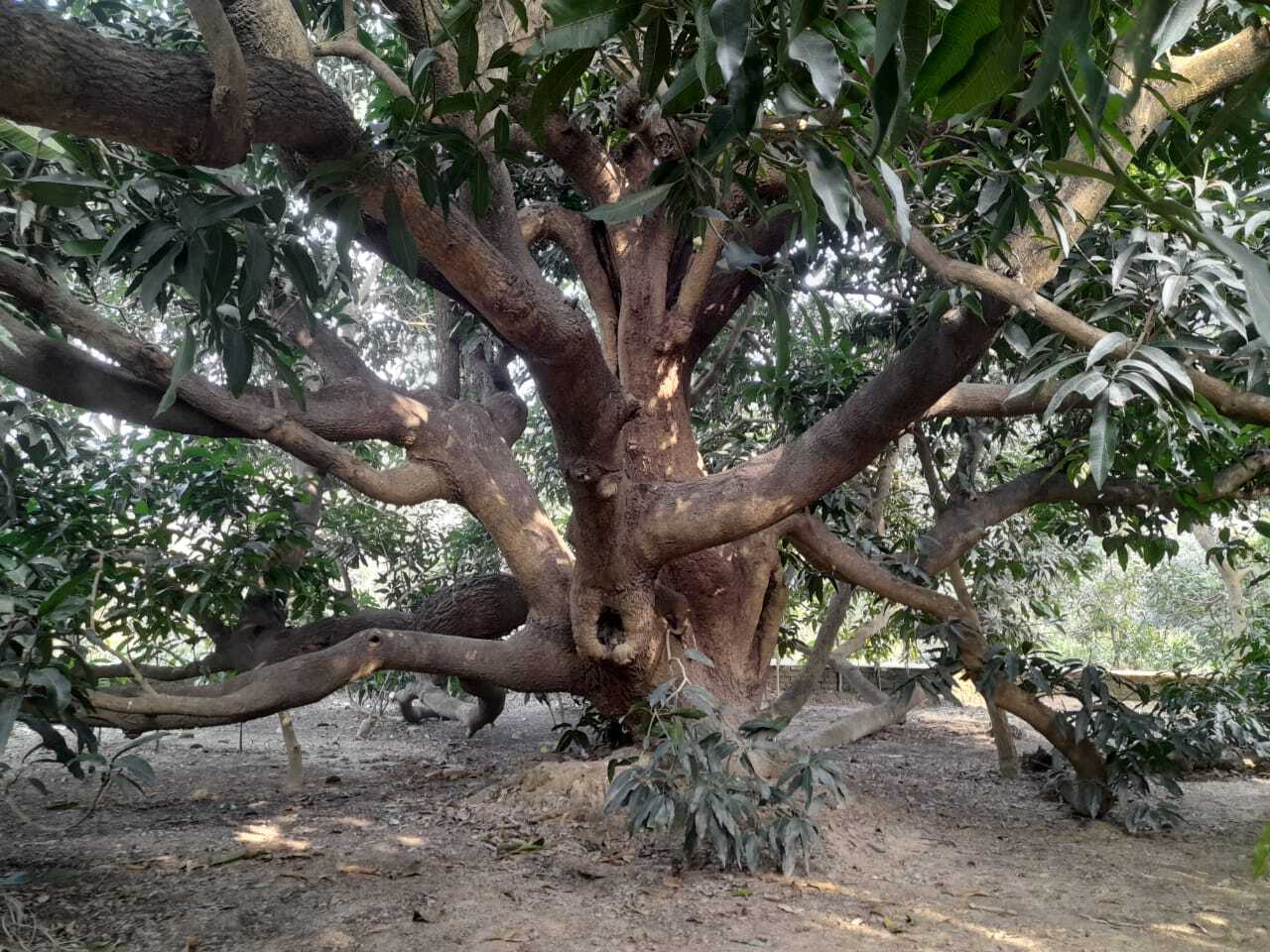 Kalimullah Khan has created a mango tree that bears 350 varieties of mangoes
Kalimullah Khan has created a mango tree that bears 350 varieties of mangoes
However, becoming one of India’s most respected horticulturists meant stumbling, starting over, and figuring things out the hard way. Kalimullah dropped out of school after failing in Class 7 and started tending to the mango orchard after his grandfather expired. It was here, among the mango trees, that he found his calling. “I was never interested in studies, and when I began working in the orchard, I realised I can work hard in areas I am interested in,” he recalls.
In 1957, inspired by an idea that came to him almost by chance, he decided to attempt something that nobody in his family could think of. He planted a tree that would bear seven different varieties of mangoes. But nature had other plans. That year, heavy floods destroyed the tree.
“From that one situation, I learnt how to handle flooding in soil,” he adds.
Despite the setback, he began experimenting with grafting and started intense research on it. By 1987, he started grafting different mango varieties onto a tree on a sprawling 22-acre plot of land. This marked the beginning of a long journey of innovation. “The tree is nearly 125 years old now, and it belongs to my grandfather, yet it still stands tall, bearing all the diverse varieties of mangoes,” he says.
How did one tree come to bear 350 varieties of mangoes?
As the years went by, Kalimullah kept pushing the boundaries of what was possible with mango cultivation. His relentless passion led to something extraordinary — a single tree that today holds more than 300 varieties, each distinct in flavour, colour, and aroma. What set him apart wasn’t just technique, but the quiet persistence behind every graft.
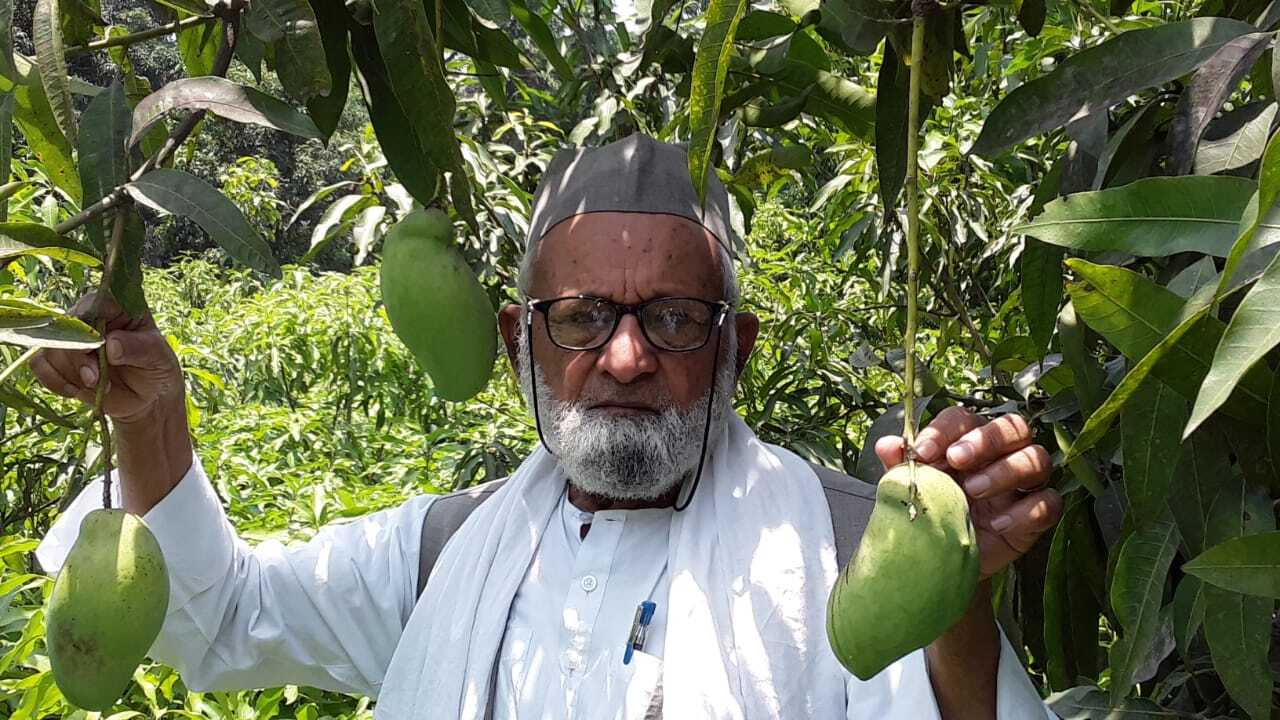 Kalimullah used the method of grafting to create a mango tree that has some unique varieties of mangoes
Kalimullah used the method of grafting to create a mango tree that has some unique varieties of mangoes
“I don’t know how many trees I have grown in my life. I am gifted with this knowledge,” he said. “People often call me a self-taught scientist, but in reality, it’s the trees who have been my teachers,” he adds.
Kalimullah’s son, Nazimullah Khan (57), has been an integral part of the orchard for nearly three decades. “When I realised my father wasn’t keeping well and there was so much work to do, I decided to step in and help him manage the orchard,” he recalls. What began as a responsibility soon turned into something deeper. He left his studies after Class 12, drawn by a genuine love for the work his father had started. “After my Class 12, I fell in love with this job. Taking care of the trees didn’t seem to be a tough task after that,” he says.
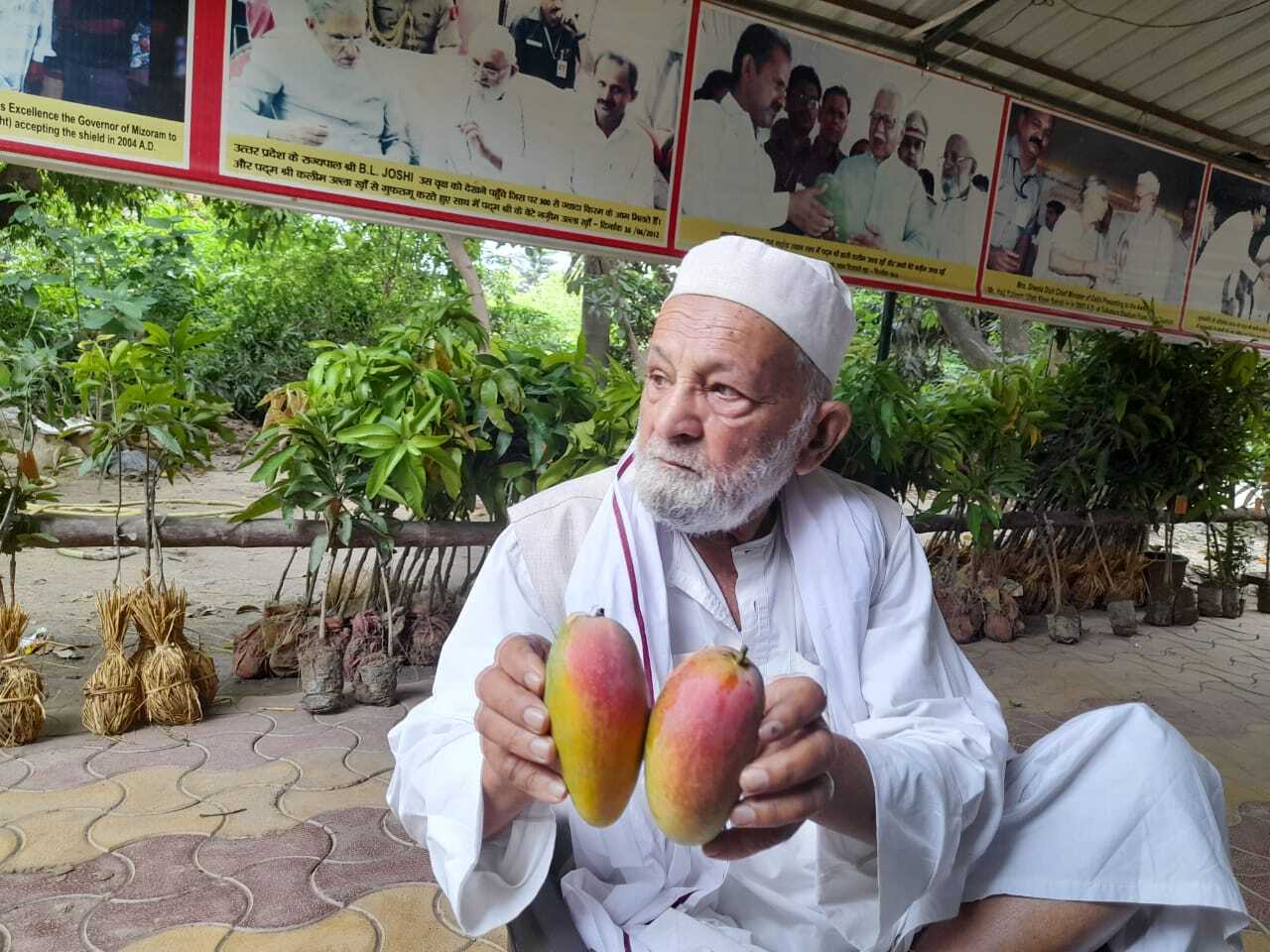 The 84-year-old man has named some of the mangoes after famous figures, such as Aishwarya Rai and Narendra Modi
The 84-year-old man has named some of the mangoes after famous figures, such as Aishwarya Rai and Narendra Modi
What started as a helping hand gradually turned into full-time responsibility. Taking over the family business wasn’t easy for Nazimullah, especially considering the scale of operations involved. Kalimullah’s unique approach to mango cultivation had placed the orchard under global spotlight. But his son proved himself by continuing his father’s legacy with dedication and passion.
“Growing mangoes takes time, research, and effort. It’s not an overnight process,” he explains. “Making a single hybrid variety can take up to 10 years. My father’s famous ‘Dushehri Kalim’, for example, took 12 years to develop because we needed to find the right varieties that would blend well together.”
Grafting: A precise and patient art
One of the key elements that sets the orchard apart from the rest is the application of grafting. This technique, where branches from different mango varieties are joined onto a single rootstock, is central to the creation of his extraordinary tree. Grafting, which allows varieties to grow together, each retaining its individual characteristics, is a process that requires precision and patience.
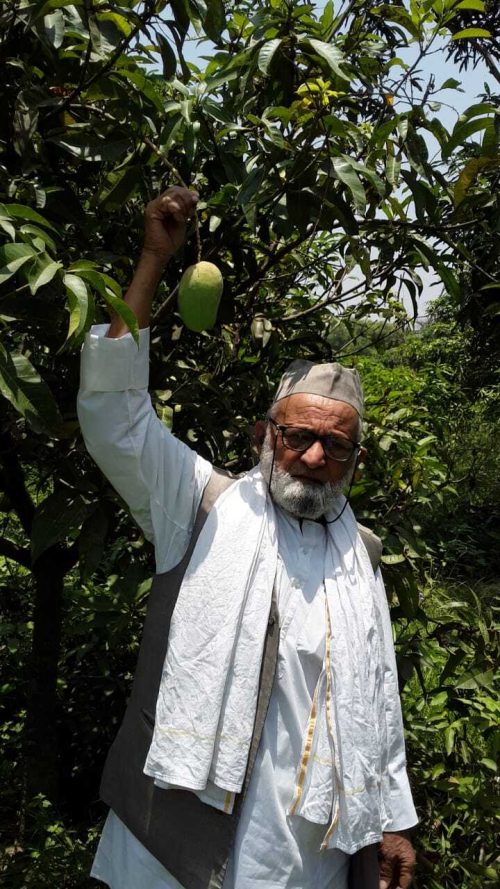 The mango tree is nine metres tall and needs proper maintenance
The mango tree is nine metres tall and needs proper maintenance
The tree in question, a nine-metre-tall giant, has different varieties growing on it. “The grafting process is an art,” Kalimullah says. “It’s like a puzzle. You need to choose the right varieties, join them carefully, and nurture them for years before you can see the fruits of your labour.”
The process begins with selecting a healthy rootstock — a young mango plant with a strong root system. From there, the horticulturist carefully slices branches from different mango varieties and joins them to the rootstock.
Over time, the grafts fuse together, allowing the varieties to grow as one tree. “It’s not just about attaching different varieties. You have to ensure they are compatible, and each variety has enough space to grow,” says Nazimullah. The result is a tree that produces mangoes with unique flavours, sizes, and colours, all from a single root system.
Mangoes that tell stories
A few varieties on the tree, include Alphonso, Langra, Kesar, Dasheri, and Chaunsa. There are even hybrid varieties that the father-son duo have developed, such as the ‘Dushehri Kalim’, a crossbreed between the Dushehri and Sinduri varieties, and the ‘Sachin Tendulkar’ mango, named after the legendary cricketer.
Each mango variety on the tree has its distinct characteristics, from size and colour to taste and texture. Some are small and tangy, others are large and sweet.
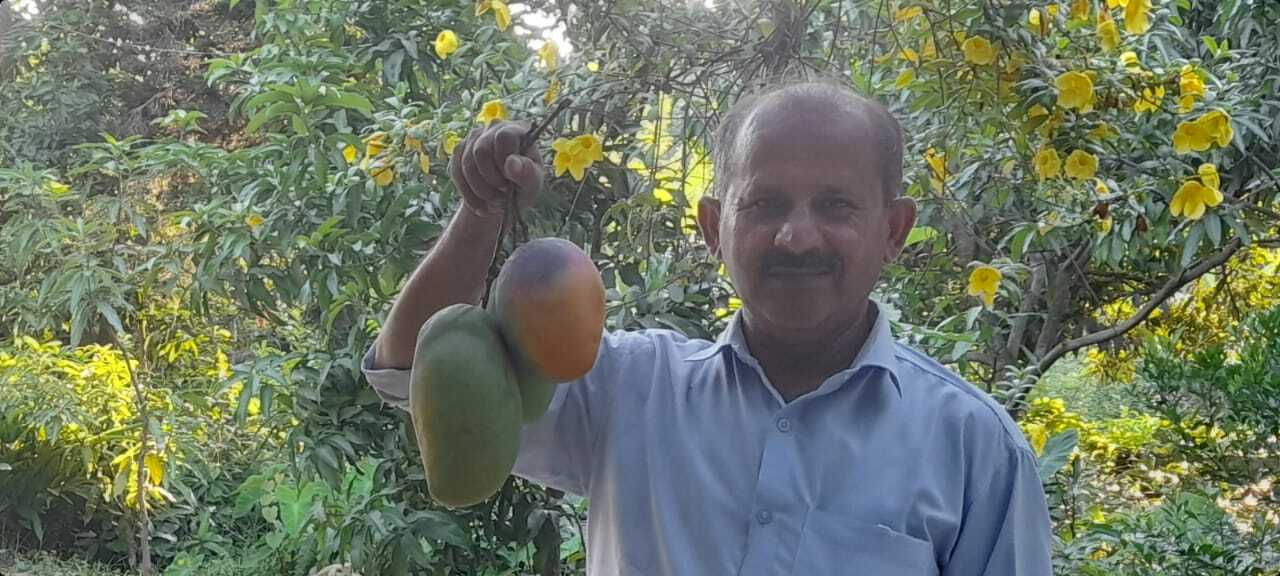 A few varieties on the mango tree, include Alphonso, Langra, Kesar, Dasheri, and Chaunsa
A few varieties on the mango tree, include Alphonso, Langra, Kesar, Dasheri, and Chaunsa
The unique names of some of the mango varieties reflect Kalimullah’s connection to the world around him. There are mangoes named after public figures, like ‘Amitabh Bachchan’, a long, totapuri mango, and ‘Narendra Modi’, which turns a shade of orange before ripening.
“I have named these mangoes after people who have inspired me or who are significant in some way,” the 84-year-old horticulturist explains. Even his favourite varieties, ‘Anarkali’ and ‘Aishwarya Rai’, are unique hybrids grafted onto the famous Alphonso mango, which serves as the mother plant.
Maintaining such an exemplary tree and an entire orchard that spans 22 acres can get difficult at times. Earlier, his father used to take care of it, but now Nazimullah carefully tends to the tree, monitoring the weather, preventing pest infestations, and ensuring the right amount of water is provided.
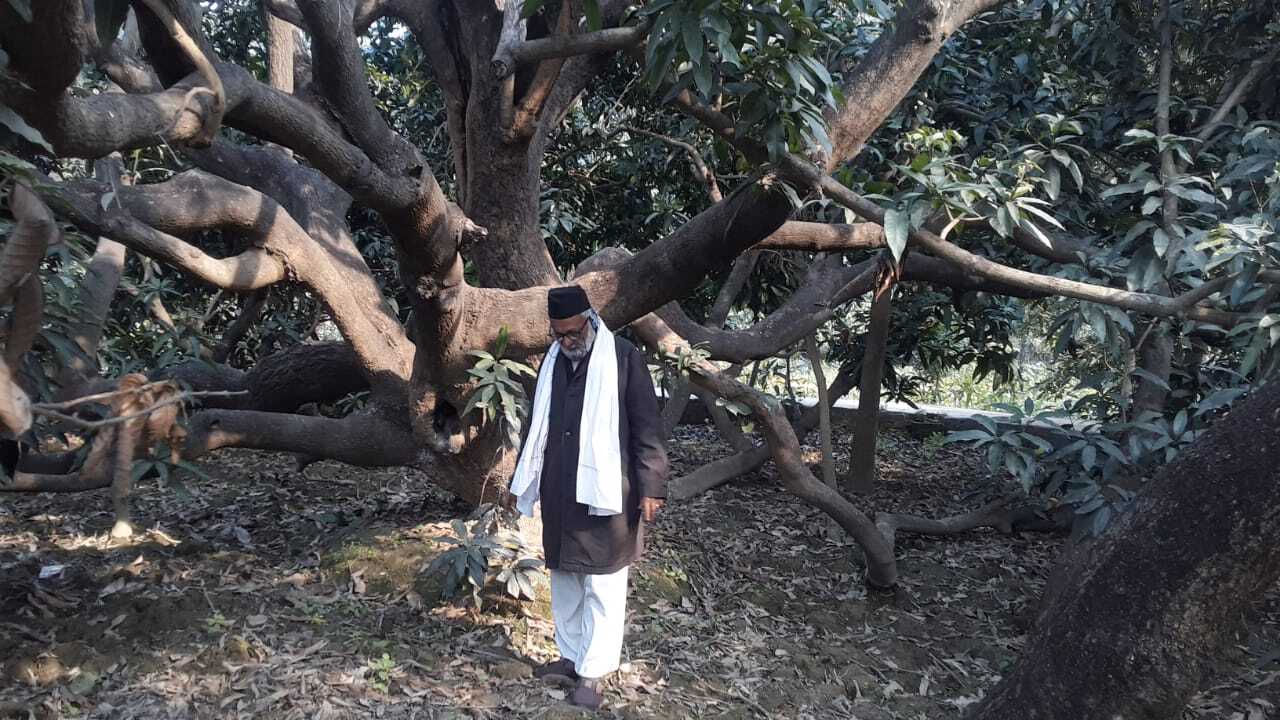 Kalimullah Khan is unable to visit his mango orchard every day due to his age and health problems
Kalimullah Khan is unable to visit his mango orchard every day due to his age and health problems
“The size of the mango depends on the rain,” Nazimullah explains. “When there’s less rain, the mangoes are smaller. So, we need to make sure they get the right amount of water. We also have to be careful when there is excessive rain, as the mangoes can be attacked by fungus.”
“If the water collects, we use machines to drain the water or add extra soil to stop it from pooling. It is essential to inspect the tree closely and spray pesticides,” he adds.
Mango varieties: A taste of India
Nazimullah, who now largely manages the orchard, shares that they source mango varieties from all over India. “People send us mango seeds from their cities, and sometimes we go to these places ourselves to collect them. We try to get the ones that are known for their quality.” The cities they collect from include Mumbai, Delhi, Kolkata, Bengaluru, Pune, and Bhopal.
The tree is home to some of the most famous mangoes in India, each with its own unique flavour and texture. Alphonso is known for its rich, sweet flavour and smooth, velvety texture. Kesar, a fragrant variety with a slightly tangy taste, is another prized mango grown in the orchard. Dasheri is beloved for its sweet, juicy flesh and distinctive tang, while Chaunsa is famous for its aroma, sweetness and thick pulp. Langra, with its distinct green skin, offers a fibreless pulp and is known for its extraordinary sweetness.
But while many of these varieties are cultivated for sale, the ones on the main tree are treated differently, shares Nazimullah.
‘Farmers from Dubai and Iran visit my tree’
Not only in India, but the tree has grabbed the attention of international researchers, too. “Farmers and researchers from Iran and Dubai too visit my tree to learn the methods of grafting,” Kalimullah proudly shares.
He calls his mango farm a place of hard work, innovation, and passion. “Mangoes are always in my heart. If given the chance, even desert landscapes could taste the sweetness of mangoes.”
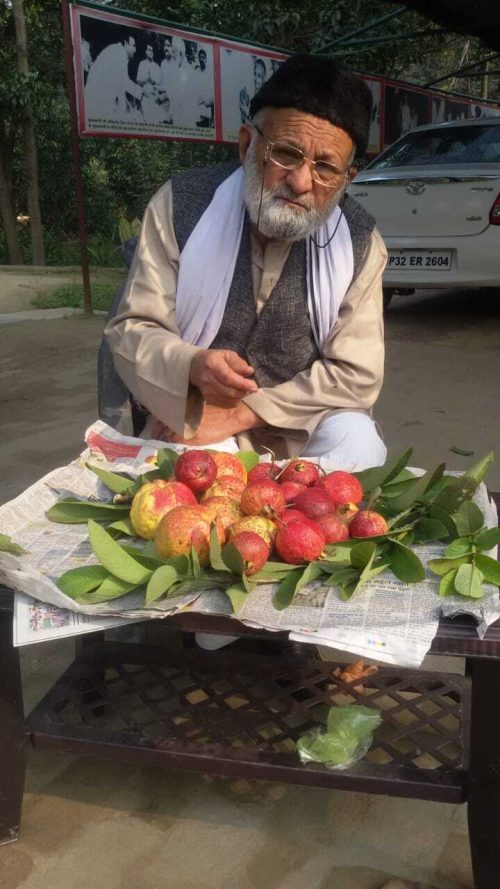 Kalimullah has spent most of his life taking care of his mango orchard and now, his son has taken over
Kalimullah has spent most of his life taking care of his mango orchard and now, his son has taken over
In his orchard, surrounded by the trees he has nurtured over the years, the 84-year-old can reflect on a lifetime of hard work, innovation, and passion. “I live with mangoes, and they are always in my heart,” he says. “If given the chance, even desert landscapes could taste the sweetness of mangoes.”
Calling it a legacy that the father-son duo have created over time with patience, Kalimullah says, “Mangoes and humans share a history that spans thousands of years, intertwined with love, culture, and tradition. I have spent my life with these trees, and when my time comes, I wish to be laid to rest beside them, as they have always been a part of me.”
Edited by Vidya Gowri; All pictures courtesy Nazimullah Khan
News